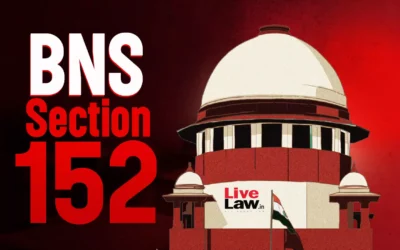An Indian Law Perspective on its use and precautions

Key
Takeaway: Indian
courts may admit Google Maps evidence subject to the same principles governing
other maps and charts under the Indian Evidence Act, 1872 and Bharatiya Sakshya
Adhiniyam, 1980, but must scrutinize accuracy, relevance, and potential privacy
implications before relying on it for decisional purposes.
1. Statutory Framework for
Admissibility of Maps and Charts
·
Section
30 of the Bharatiya Sakshya Adhiniyam (BSA) deems “published maps or charts
generally offered for public sale, or maps or plans made under authority of the
Central or State Government” as relevant facts, admissible without further
proof of their contents.
·
The
Indian Evidence Act, 1872 contains no express exclusion of private or
commercial maps; hence, Google Maps screenshots or distance measurements may be
admitted as secondary evidence under Sections 63–65, provided their
authenticity and accuracy are established.
2. Judicial Notice and Google Maps
·
Judicial Notice of Locations: Courts routinely take judicial notice
of street names, public landmarks, and well-known localities. In Cooperative Tanjong Keramat Malaysia Berhad v. Kelantan Berhad & Anorthe Malaysian High Court took
judicial notice of two shoplot addresses and measured the straight-line
distance via Google Maps to hold the breach of a 3 km exclusive territory
clause.
·
Indian Counterparts: Indian courts have similarly used
Google Earth imagery to determine possession or land use (e.g., annexed Google
Earth snapshots were tendered in land-possession petitions, though the Kerala
High Court cautioned that such images are not conclusive proof of title or
occupation.
3. Case Law Examples
|
Case |
Court & Year |
Use of Google Maps/Earth |
Outcome |
|
Frank |
Supreme Court, 2024 |
Examined “dropping a PIN” feature in bail conditions; |
Held that forcing accused to share Google pin violates |
|
High Court of Malaya, 2025 |
Measured direct distance (less than 60 m) between two |
Court relied on Google Maps as objective, verifiable |
|
|
State |
Kerala High Court, 2018 |
Parties tendered Google Earth snapshots of property from |
Court noted that imagery alone is insufficient to prove |
|
Karnataka |
Karnataka High Court, 2023 |
Fisheries officer’s report included Google Earth distance |
Data used to support administrative decision; no challenge |
4. Principles Governing Judicial
Reliance on Google Maps
1. Foundation
of Accuracy:
– Google Maps measurements are approximate, based on satellite data, and
subject to updates; courts must allow expert testimony or cross-examination to
challenge precision.
2. Authentication:
– The party tendering a Google Maps screenshot must authenticate it, for
instance through a qualified IT or survey expert, under Sections 65 and 67 of
the Evidence Act.
3. Corroboration
with Official Records:
– To satisfy Section 30 BSA, courts should cross-verify Google Maps data with
Survey of India maps, revenue plans, or municipal records.
4. Privacy
Considerations:
– As Frank Vitus underscores,
reliance on dynamic location-sharing features (e.g., live tracking or PIN
drops) raises Article 21 privacy concerns; static screenshots present fewer
issues.
5. Practical Guidance for Advocates and
Judges
·
Drafting Pleadings: Specify the exact URL, date, time, and
zoom level of the Google Maps image or measurement relied upon; annex the
screenshot with metadata where possible.
·
Pre-trial Motions: File a notice of intention to rely on
Google Maps evidence, allowing the court to appoint a neutral survey expert if
accuracy is contested.
·
Cross-Examination: Prepare expert evidence on satellite
imagery reliability and potential distortions (e.g., projection errors,
outdated imagery, seasonal cloud cover).
·
Balancing Rights: Where bail or privacy rights are at
stake, avoid conditions mandating ongoing access to the accused’s real-time
location; static geospatial evidence should be limited to fixed-point facts.
Conclusion
Indian courts may, in appropriate
cases, rely on Google Maps to
determine geographical distances and locations, provided the evidence is
properly authenticated, corroborated by official sources, and used in a manner
that respects fundamental rights. Advocates should meticulously lay the
foundation for such evidence, and judges should apply established rules of
evidence to ensure that the convenience of modern geospatial tools does not
compromise accuracy or privacy.

